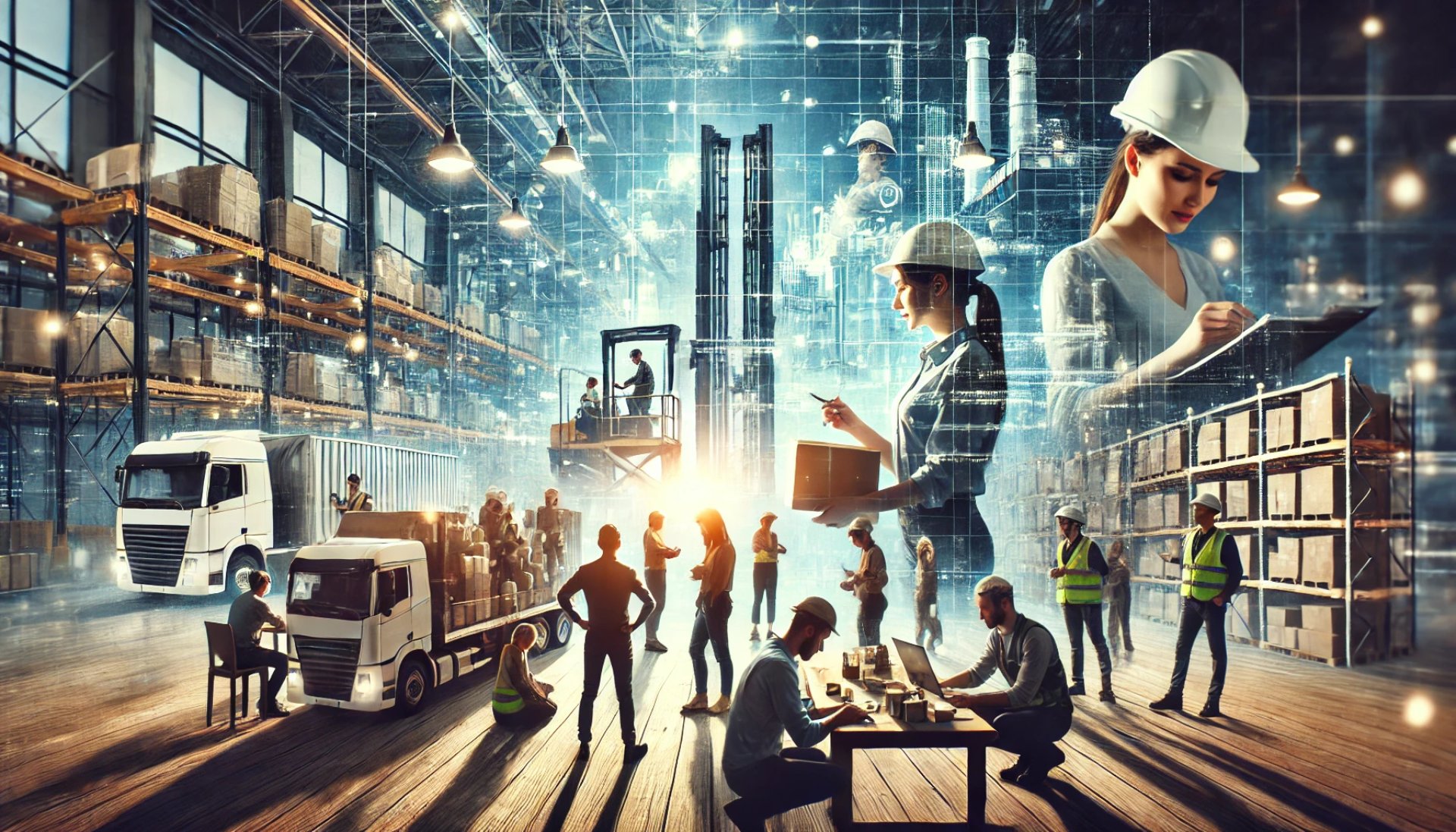Peterborough: 01733 802300
Huntingdon:
01480 718333
How Supply Chain Disruptions are Reshaping Warehouse & Logistics Workforce Planning
In recent years, the global supply chain has faced unprecedented challenges. From the COVID-19 pandemic to political instability and environmental disasters, disruptions have become the new normal for logistics and warehousing operations. These challenges aren’t just affecting supply chains themselves—they’re also having a profound impact on workforce planning.
For companies in the logistics sector, the ability to adapt to these disruptions has become a key competitive advantage. So, what are the major changes happening in workforce planning, and how can businesses stay ahead of the curve?
The Rise of Flexibility in Workforce Planning
One of the most significant shifts we’re seeing is the move towards greater workforce flexibility. Traditionally, logistics companies relied on a steady base of full-time employees to meet demand. But with supply chain disruptions leading to unpredictable peaks and troughs in demand, that model no longer works.
Many companies are now turning to flexible, on-demand workforces. This could mean a higher reliance on temporary workers, freelancers, and even part-time employees who can be brought in as needed to handle sudden surges in demand. This model provides companies with the agility they need to adapt to an unpredictable supply chain, without the financial burden of maintaining a large full-time workforce when demand dips.
In fact, research shows that companies that have embraced flexible workforce models have fared better in managing supply chain disruptions. By leveraging temporary and contract workers, businesses can quickly scale their operations up or down based on current needs. This approach not only helps with staffing but also enables businesses to respond to external challenges with greater resilience.
Technology as a Workforce Enabler
Another key factor reshaping workforce planning in logistics is technology. From advanced warehouse management systems (WMS) to predictive analytics powered by artificial intelligence, tech is playing an increasingly important role in workforce decisions.
Predictive analytics, in particular, can help companies forecast demand with greater accuracy, allowing them to plan their workforce needs more effectively. By analysing historical data and real-time trends, these tools can help logistics companies determine how many workers they’ll need, when they’ll need them, and what skills will be most critical.
At the same time, technology is changing the types of skills that workers need. Automation and robotics are becoming more prevalent in warehouses, which means employees must be trained to work alongside these systems. This shift is creating a new demand for workers with tech skills—people who can operate and troubleshoot automation systems, analyse data, and optimise workflows using digital tools.
Training and Upskilling for the Future
For companies in the logistics industry, it’s clear that investing in employee training and upskilling is critical. As technology reshapes the sector, workers who are trained in digital tools and automation will become increasingly valuable. Companies that prioritise training and development will not only attract top talent but also build a workforce that’s capable of navigating the challenges of a disrupted supply chain.
Training doesn’t just benefit employees—it benefits the bottom line. A well-trained workforce is more efficient, more adaptable, and better equipped to handle the complexities of modern logistics operations. By investing in your workers’ skills, you’re also investing in the resilience of your business.
Conclusion: Planning for the Unpredictable
For companies in the logistics industry, it’s clear that investing in employee training and upskilling is critical. As technology reshapes the sector, workers who are trained in digital tools and automation will become increasingly valuable. Companies that prioritise training and development will not only attract top talent but also build a workforce that’s capable of navigating the challenges of a disrupted supply chain.
Training doesn’t just benefit employees—it benefits the bottom line. A well-trained workforce is more efficient, more adaptable, and better equipped to handle the complexities of modern logistics operations. By investing in your workers’ skills, you’re also investing in the resilience of your business.










CONTACTS
PHONE
80 PLUS YEARS OF RECRUITMENT SERVICE
Recruit Mint cover temporary, contract and permanent recruitment within a 60-mile radius of Peterborough, with a total of over 80 years’ experience within the recruitment industry, you can be safe in the knowledge that you are truly dealing with industry experts.

QUICK LINKS
Recruit Mint | Registered in England 08091003 | Vat No.
